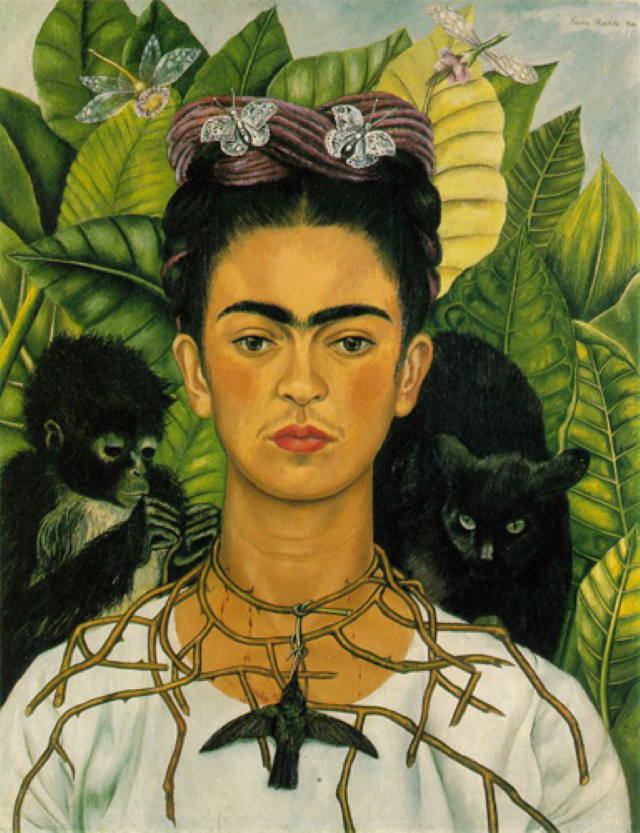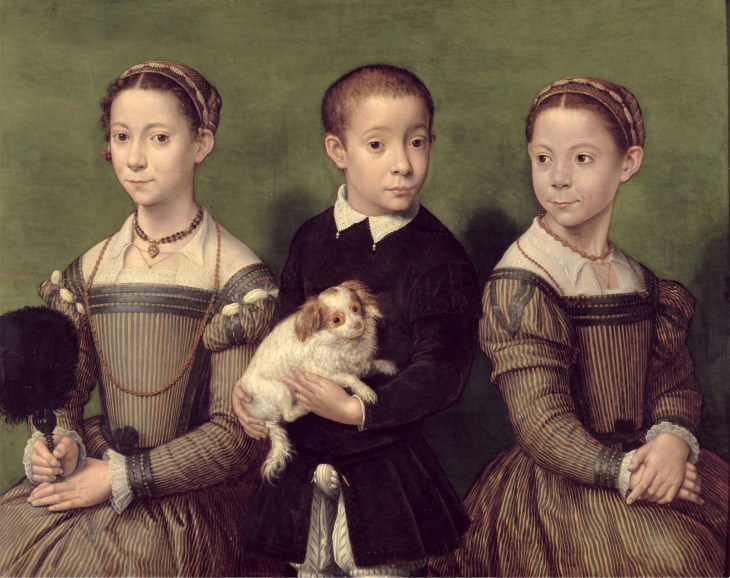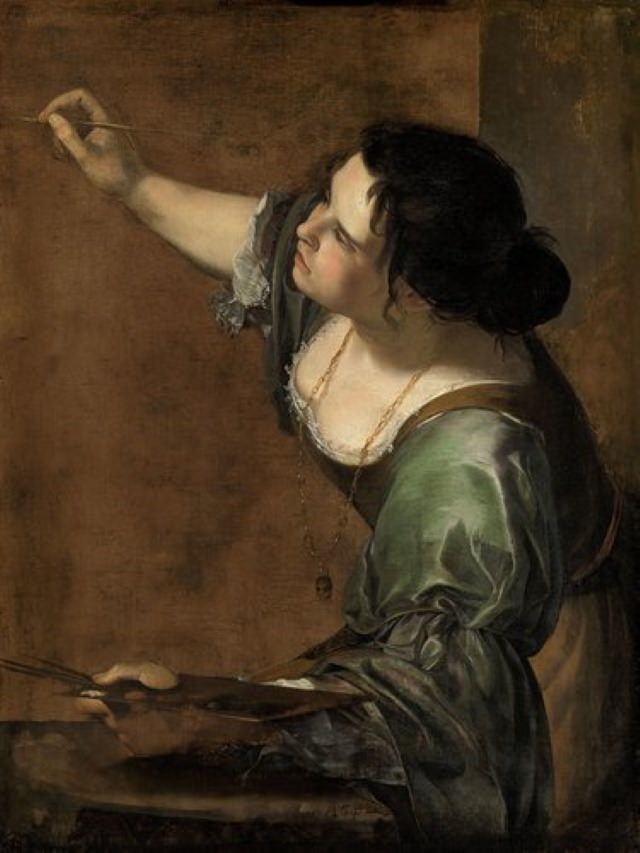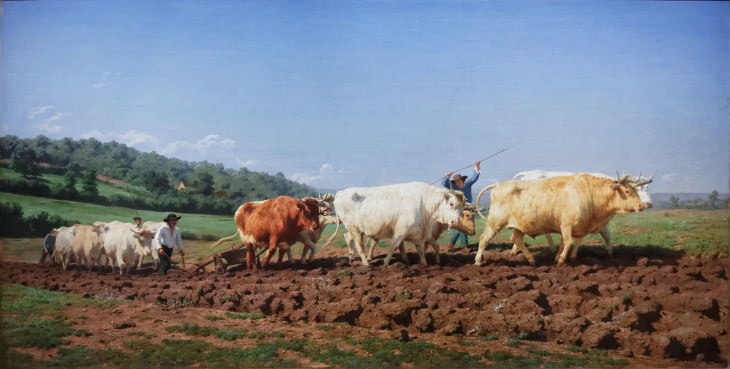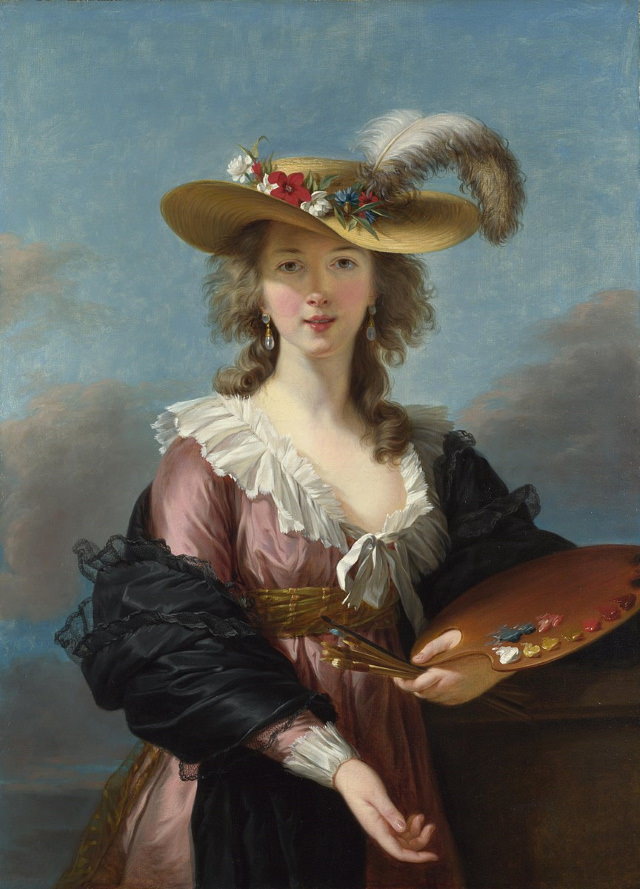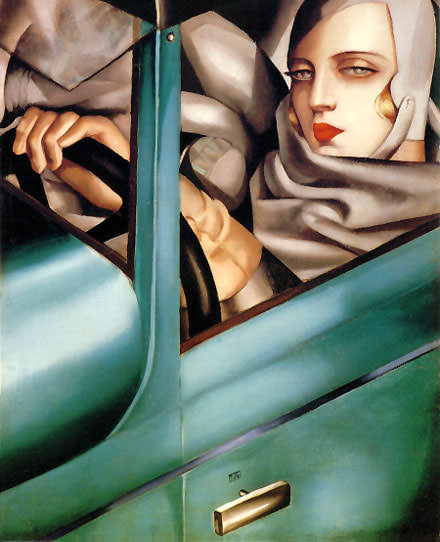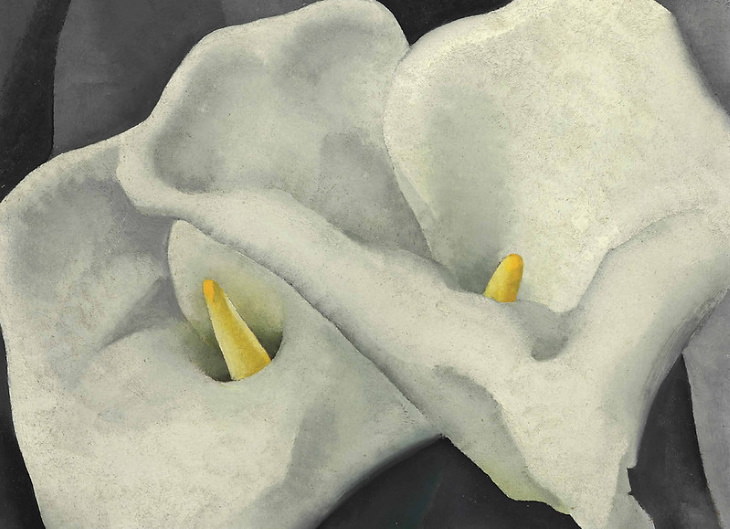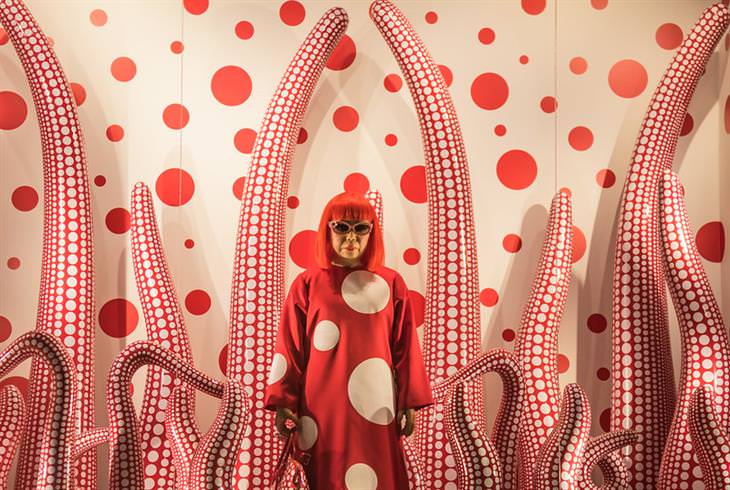1. Mary Cassatt (1844–1926)
The Child`s Caress (c.1890)
Let’s start this list with the famous American Impressionist artist, Mary Stevenson Cassatt. Mary was born into an affluent family in Allegheny City, Pennsylvania. At the Pennsylvania Academy of the Fine Arts, Cassatt only received a partial artistic education and left art school because female students weren’t even allowed to draw live models at the time.
At age 22, Cassatt moved to Paris, where she focused on developing her skills. In Paris, Mary befriended Edgar Degas and joined the Impressionists. Mary Cassatt is most well-known for her airy and soft painting style, and her everyday scenes depicting women, children, and women in the role of the mother and caretaker.
To this day, Cassatt is considered to be one of the most successful Impressionists, and an inspiration for both female artists and the Women’s Suffrage Movement.
2. Frida Kahlo (1907–1954)
Frida Kahlo - Self-portrait with Thorn Necklace and Hummingbird (1940) Image Source:
cea +/ Flickr
Frida Kahlo needs no introduction. After all, the Mexican painter is definitely on the list of the most recognizable 20th-century artists, on par with Picasso and Dali. Frida’s ability to create art that is both personal, symbolic, and representative of her cultural background are all features that make her a truly great artist.
All these outstanding qualities of her art become even more valuable in the context of Kahlo’s life: the terrible accident she suffered as a young woman, her turbulent relationship with Diego Rivera, and her tragically short life. Frida Kahlo is known for her self-portraits that combine both traditional Mexican motifs and surreal elements.
Although she was mostly known as Diego Rivera’s wife during her lifetime, the recognition of Kahlo's work has exploded after her death. Today, Kahlo’s work is the emblematic example of Mexican indigenous traditions in art, and her persona is considered a feminist icon.
3. Sofonisba Anguissola (1532–1625)
Two Sisters and a Brother of the Artist (c.1570-1590)
Chances are, you’ve never heard of Sofonisba Anguissola, but she was actually one of the first successful female artists in history. Born at the height of the Italian Renaissance into a poor but noble family, Sofonisba’s father made the tactical decision to send her and her sisters to apprenticeships where they studied fine art.
This was very unusual at the time, as women apprenticed only if art was a family business and one of the male members had a workshop. Sofonisba excelled in painting, so much so that she was noticed by the great Michelangelo himself, who became her informal mentor.
At the peak of Anguissola’s career, she was employed as the court painter of King Philip II of Spain, which was an incredible honor. Today, the artist is most well-known for creating impeccable and lively court portraits of the royal family and other nobles.
4. Berthe Morisot (1841–1895)
Berthe Morisot is another famous Impressionist artist. The French artist was a distant relative of the celebrated Rococo painter, Jean-Honoré Fragonard, and she started painting at a young age. Morisot joined the Impressionist movement early on, participating in the first exhibition along with such famous names as Monet, Degas, Cézanne, and Renoir.
Morisot’s style is characterized by airy and light colors and soft shapes that were instinctively perceived as “feminine,” for which she was often criticized. The artists mostly created small-scale pieces using watercolor, pastels, and charcoal.
5. Artemisia Gentileschi (1593–1653)
Artemisia Gentileschi was an Italian Baroque painter. Without a doubt, Artemisia was one of the most accomplished 17th-century artists, and the first woman to join the Accademia di Arte del Disegno in Florence. Alas, her work is largely unknown or perceived exclusively through the prism of her negative personal experiences today.
Nevertheless, Artemisia’s incredible skill allowed her to produce large-scale works, and her impeccable depiction of color and light make her one of the strongest Italian Baroque painters. But how did this female artist manage to pursue artistic training, in the first place?
As a daughter of a famous painter, Artemisia started helping out at the workshop at an early age, and by the age of fifteen, she was already producing professional work. This allowed her to pursue a professional career as a painter and even gain clients from abroad.
Artemisia’s paintings depict myths, Biblical scenes, and allegories, but she mainly focused on scenes that featured women, such as Susanna and the Elders and Judith Slaying Holofernes. Today, Gentileschi’s works are exhibited at the finest art galleries in the world, such as the Uffizi Gallery.
6. Rosa Bonheur (1822–1899)
Today, the French Realist painter is well-recognized for her large-scale lifelike depictions of animals, as well as her unapologetic attitude in life. Rosa Bonheur‘s father Raymond was a famous painter, which allowed her to pursue an artistic career and exhibit her paintings at the famous Paris salon.
7. Élisabeth Vigée Le Brun (1755–1842)
Self Portrait in a Straw Hat (after 1782)
Like many of the painters on this list, Élisabeth Le Brun was the daughter of an artist. By the time she was a teenager, Élisabeth was already producing professional portraits and landscapes. Real success came to Le Brun when she was named Marie Antoinette's official portrait painter.
From that moment on, she started accepting international clientele and was granted entry to art academies, which were barred for most women. A very prolific artist, Élisabeth Le Brun created at least 1,000 portraits and landscapes during her career. In her portraits, Le Brun uses light brushstrokes and manages to retain, effortlessness, and fluidity, which was very unusual and valuable at the time. Her paintings combine both elements of Rococo and Neoclassicism.
8. Tamara de Lempicka (1898-1980)
Autoportrait (also known as Tamara in a Green Bugatti), 1929 Image Source: Confetta/ Flickr
The Polish painter Tamara de Lempicka managed to encompass the entire atmosphere of the roaring ‘20s in her Art-Deco portraits of the wealthy and famous. In her paintings, women and men appear polished and idealized like Hollywood stars in various urban environments. Women especially are depicted as strong and independent, as exemplified by her most famous piece, a self-portrait titled Tamara in a Green Bugatti that shows her driving a luxurious race car.
De Lempicka was born into a wealthy Polish family, and she decided to take up a career as an artist in adulthood. She studied at Académie de la Grande Chaumière, a private art school in Paris, and only a few years later, her works were already exhibited at the Salon des Tuileries and the Salon des Femmes Peintres.
These appearances allowed her to get a big break, and her career reached its peak in the 1930s when she hosted a successful show at the Carnegie Institute of Pittsburgh. Shortly thereafter, she was commissioned to paint portraits for King Alfonso XIII of Spain and Queen Elizabeth of Greece.
9. Georgia O’Keeffe (1887–1986)
Georgia O'Keeffe is one of the most acclaimed modern artists. She is also one of the greatest female artists, although O’Keeffe herself refused to view herself as such and avoided participating in any all-female exhibitions. O’Keeffe grew up in Wisconsin, but her career as an artist developed when she moved to New York City with her husband, photographer Alfred Stieglitz.
Although O'Keeffe created various kinds of abstract art, she is most famous for her large, close-up paintings of flowers. Her sensual and unique take on abstract art helped define American modernism as a distinct phenomenon in the world art scene.
10. Yayoj Kusama (1929- )
Yayoj Kusama is the only living artist on this list, and to this day, at age 91, her vivid and colorful exhibitions brighten up our lives. The Japanese artist started her formal art education at the Kyoto School of Arts and Crafts, where she was trained to work in the traditional Japanese style called nihonga.
However, Yayoj soon grew tired of the constraints of traditional art and developed her own colorful and abstract style, drawing much of her inspiration from European and American art. Defined as abstract impressionism, Kusama’s conceptual art isn’t limited to paintings, and it often features polka dots, bright colors, and naturalistic objects like mushrooms and pumpkins.
Please share this post with other art lovers!


